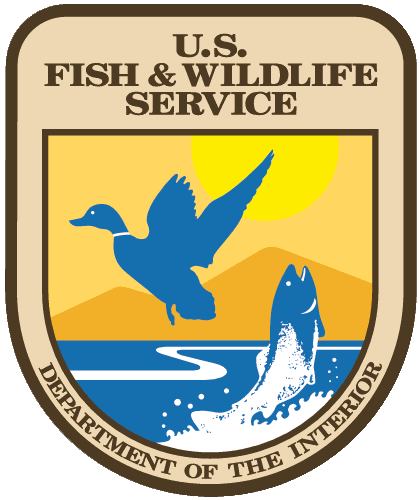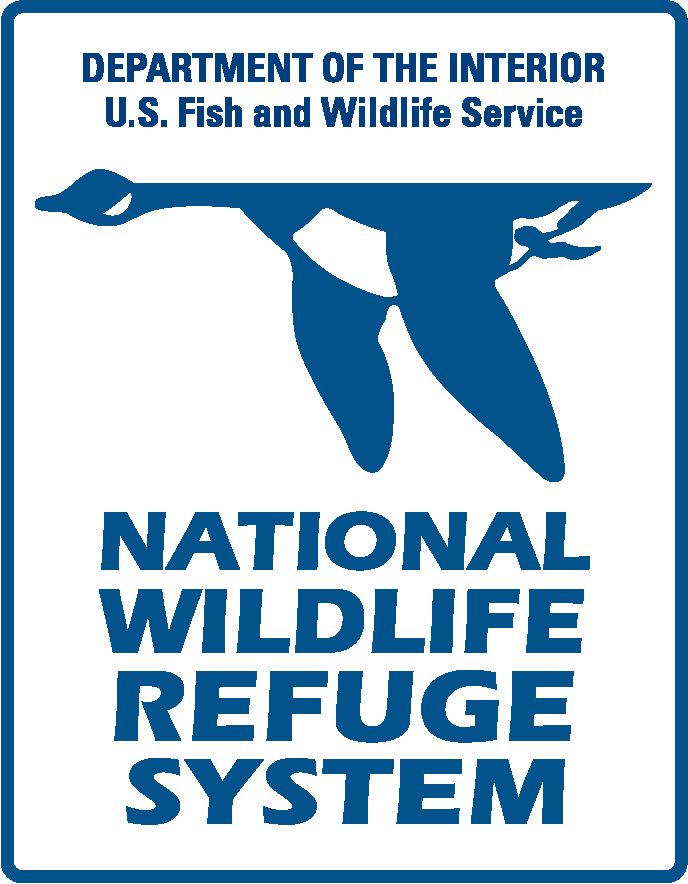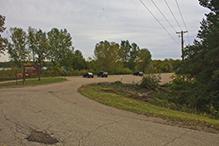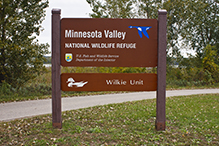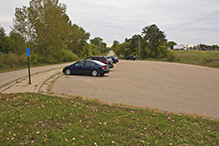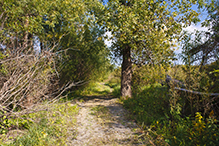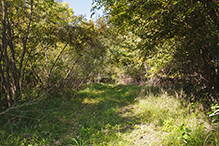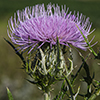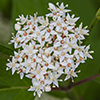Minnesota Valley National Wildlife Refuge
Wilkie Unit
About • Location • Activities • Ecology
About |
||||
Ownership |
||||
|
||||
Links |
||||
Overview |
||||
The Wilkie Unit is one of eight units that make up the Minnesota Valley National Wildlife Refuge. It lies on the south bank of the Minnesota River in an outer Twin Cities suburb. North of the river is the Bloomington Ferry Unit. This site is part of a much larger area that has been designated as the Lower Minnesota River Valley Important Bird Area (IBA). The Wilkie Unit is an important stopover for migrating waterfowl, including Tundra Swans and American White Pelicans. The largest Great Blue Heron rookery in Minnesota is on this unit. A hiking trail passes through bottomland forest along the bank of the Minnesota River. |
||||
History |
||||
|
||||
Management |
||||
|
||||
Comments |
||||
|
||||
Location |
||||
Maps |
||||
Printable Map(s) with GPS coordinates |
||||
Size |
||||
2,100 acres |
||||
Parking |
||||
N44 47.732, W93 25.194 |
||||
Hours |
||||
Sunrise to Sunset for approved activities, including federal holidays |
||||
Fees |
||||
No fee No National Wildlife Refuge in Minnesota charges a fee |
||||
Driving Directions |
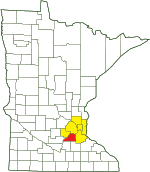 |
|||||
| Scott County | ||||||
| Metro Area | ||||||
Activities |
||
Hiking Trails |
||
The Fischer Lake Trail (Minnesota River Trail on the printed map) is accessed from the paved Minnesota River Valley State Trail 0.3 mile west of the parking area. There is a small parking lot at that spot with room for a few cars. The natural surface trail follows an administrative road north 0.6 miles to the Minnesota River and an intersection of two trails. The trail to the right of the intersection is a 0.9 mile footpath that leads east along the river and eventually loops back to the main trail. The north leg of the loop is overgrown in spots. The west and south legs of this loop are on a raised berm surrounding a shallow man-made pool. To the left of the intersection the Blue Lake Trail follows an administrative road along the river west 0.9 mile to a sharp bend in the river. A downed tree at this point blocks the road. The refuge west of the Fischer Lake Trail, including the Blue Lake Trail, is closed to the public March 1 to August 31 to protect nesting great blue herons. The Minnesota River Valley State Trail (“State Corridor Trail” on the printed map) is a paved bike trail. It leads from the parking lot east to the Bloomington Ferry Unit parking lot and west to the Minnesota River Trail. |
||
Hunting |
||
West of US 169: Archery Only: Deer & Upland Game East of US 169, West of Eagle Creek: Firearms & Archery: Waterfowl, Archery Only: Deer & Upland Game East of US 169, West of Eagle Creek: No hunting See Hunting - Minnesota Valley National Wildlife Refuge for details. |
||
Ecology |
|||||||
Ecological Classification |
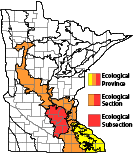 |
||||||
| Ecological Province | Eastern Broadleaf Forest Province |
||||||
| Ecological Section | Minnesota & NE Iowa Morainal |
||||||
| Ecological Subsection | Big Woods |
||||||
| Land Type Association | Le Sueur Alluvial Plain |
||||||
Native Plant Communities* |
|||||||
Bulrush Marsh (Northern) Dry Barrens Oak Savanna (Southern): Oak Subtype Sedge Meadow Silver Maple - (Virginia Creeper) Floodplain Forest |
|||||||
| * Source: The Minnesota Biological Survey, Minnesota Department of Natural Resources, Division of Ecological Resources | |||||||
Natural Features |
|||||||
Bottomland forest, marsh, three lakes. |
|||||||

Slideshows |
||

Visitor Videos |
|||
Share your video of this destination. |
|||
| This button not working for you? Simply email us at info@MinnesotaSeasons.com. Attach a video, a YouTube link, or a cloud storage link. |
|||
Other Videos |
|||


Important Nesting Area
The Wilkie Unit is included in the Lower Minnesota River Valley IBA. The largest Great Blue Heron rookery in Minnesota is on this unit. The rookery supports approximately 600 nests, about half Great Blue Herons and half Great Egrets, as well as some Black-crowned Night Herons. Northern Bald Eagles also nest here. In 2003, about 1,000 Tundra Swans were seen here during migration. Large numbers of American White Pelicans stop over during their fall migration.
Created: Last Updated: © MinnesotaSeasons.com. All rights reserved. |
